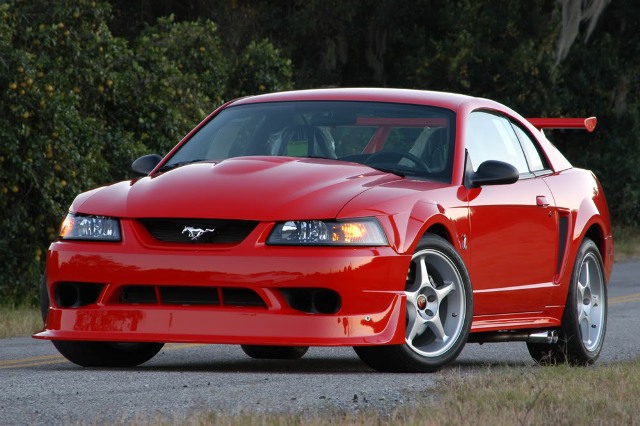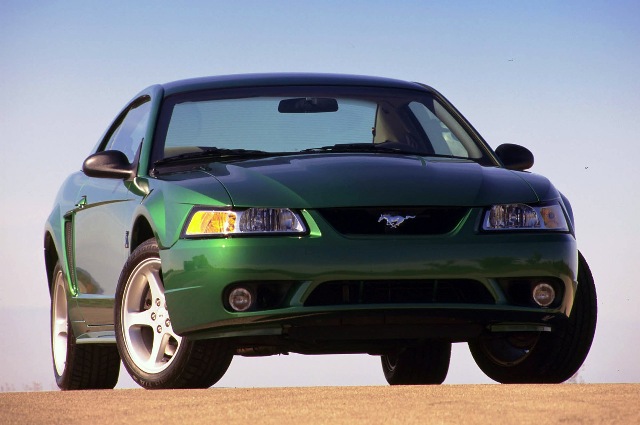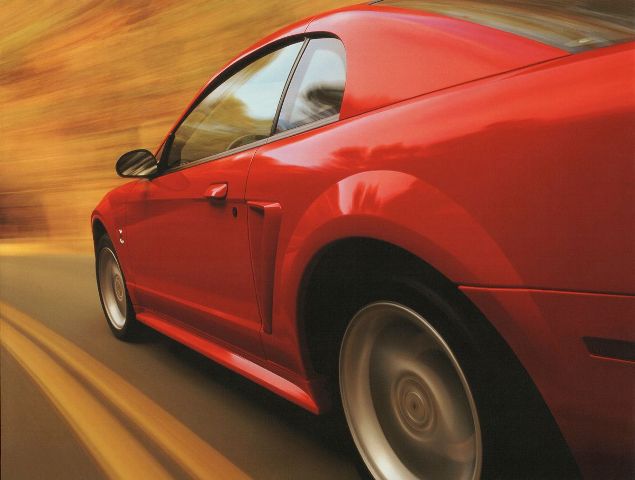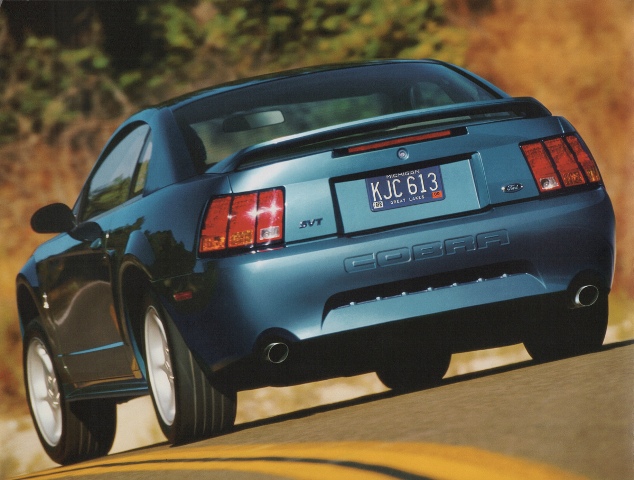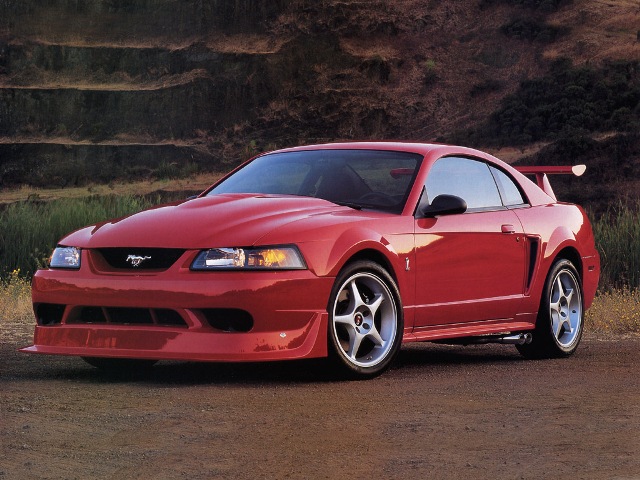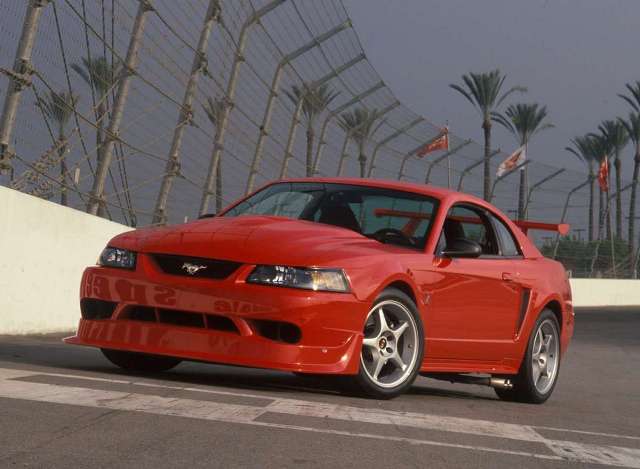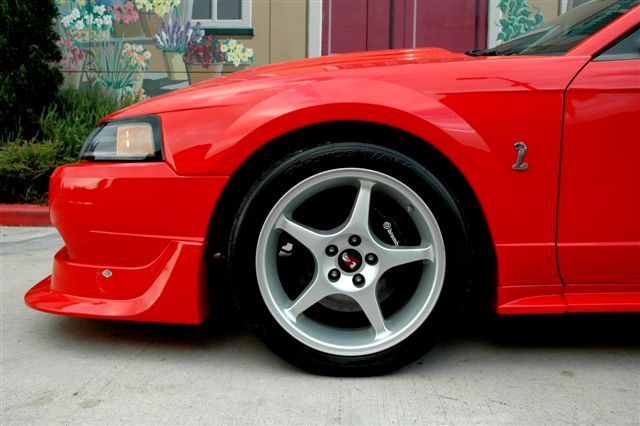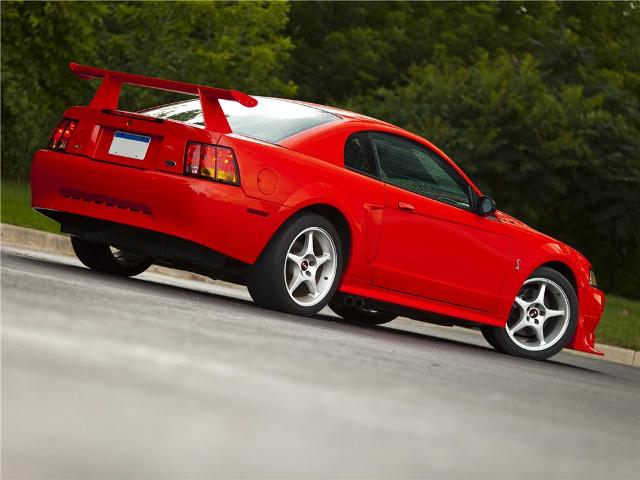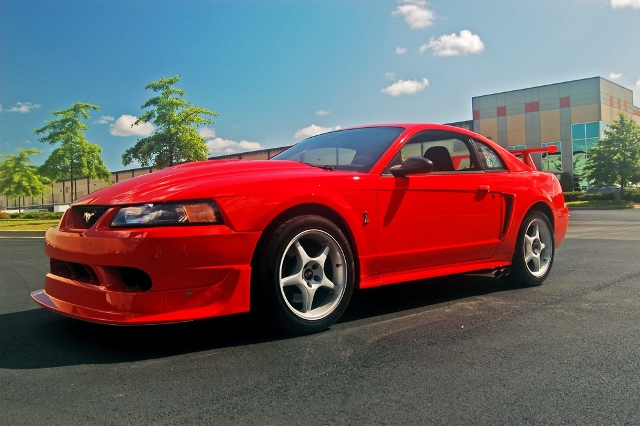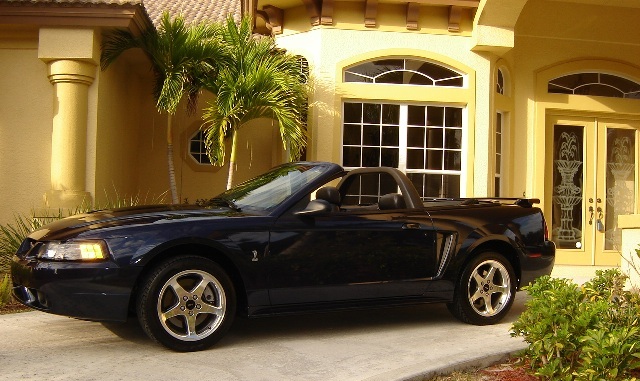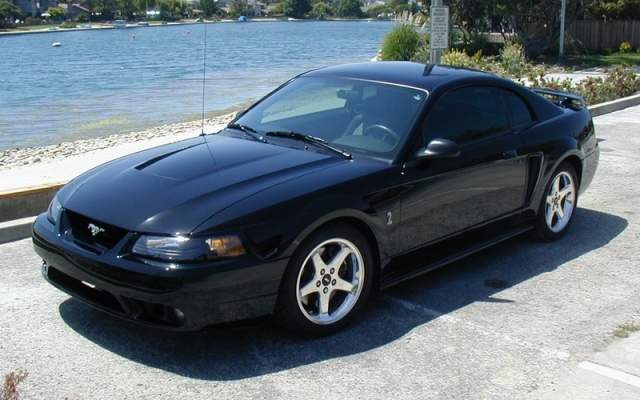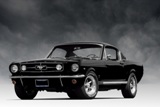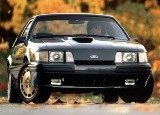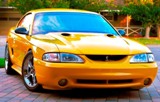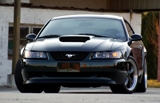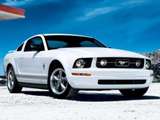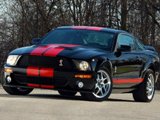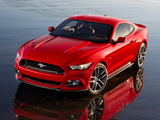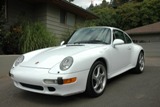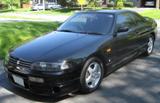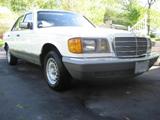Enthusiast's Corner
1999-2001 Ford Mustang SVT Cobra: High Expectations
Written by James Dolan
1999 SVT Cobra
There was much anticipation about the heavily revised 1999 SVT Cobra within the motoring press and with Mustang enthusiasts who were both clamoring for a car that would at the very least be able to keep pace with General Motors formidable Chevrolet Camaro SS and Pontiac Firebird WS6 twins. Ford had promised a Cobra with more power, bigger brakes and an all new and long anticipated independent rear suspension. The new Cobra would also share many of the improvements made to the mainstream Mustang with an improved body structure, ABS and traction control. On paper it appeared that the 1999 Cobra could at least be able to match the performance of its G.M. rivals. It seemed as if the Cobra had finally reached its full potential. Thirty-five years prior who would have ever thought that a factory Mustang would have a sophisticated V-8 engine and independent rear suspension, this was the technology found in high dollar imported exotic sports machinery not a simple American pony car.
An additional horsepower was extracted from the 4.6-litre 32-valve V-8 that boosted total power to 320-horsepower and 317-pond-feet of torque. This power was gained by improved intake geometry, a new more efficient coil-on-plug ignition system and a new tumble-port cylinder-head design that revised the combustion chambers creating a “tumbling” effect of the air/fuel mixture, thus increasing efficiency and power. With this extra boost in power the Cobra now matched the top grade Camaro and Firebird in the horsepower department. The 1999 Cobra might have been powerful but that wasn’t the car’s biggest innovation, for that you would have to look underneath the car.
Rumors had been swirling for many years that the Mustang or a variation of the Mustang would receive an independent rear suspension and every year enthusiasts would be disappointed when these rumors never came to fruition. Ford did toy with the idea of a Mustang with an independent rear suspension back in 1968 when it constructed the Green Hornet EXP-500 as a test vehicle with fuel injection and independent rear suspension, but the car never reached production. Again, in the late 80’s and early 90’s Ford studied the idea of basing the 1994 Mustang on the 1989 Thunderbird’s MN12 platform that was equipped with an independent rear suspension but that idea was shelved due to the high production costs of this platform. All this changed in 1999 when the engineers managed to stuff a rather sophisticated independent rear suspension (IRS) under the rear end of the Cobra.
Installing an IRS in the Cobra was no easy task for the SVT staff. Because the directive from Ford to SVT had been that any car that they marketed had to be easily produced on the regular Mustang production line (with the exception of the engine), engineers had to figure out a way of installing the IRS without any major modifications to the existing Mustang floor pan. This meant that if an IRS system was to be used in the Cobra it would have to be a direct bolt-in replacement of the regular solid-axle suspension. To accomplish this feet SVT reversed engineered the IRS from known suspension hard points and mountings. A welded-up tubular sub-frame was used to cradle an aluminum differential housing and as a mounting point for upper and lower control arms, toe control links and roll bar.

An illustration of the independent rear suspension that found its way onto the 1999 Cobra.
All rear suspension components were exclusive to the Cobra with the sole exceptions being the rear wheel bearing assemblies and aluminum differential housing that were borrowed from the discontinued Lincoln Mark VIII. Inside the diff lived a set of 3.27:1 gears along with a Traction-Loc limited-slip mechanism. Upper control arms were made of steel while the unequal-length lower control arms were cast of aluminum. Rounding things out were a set of high-rate coil springs, special halfshafts and a thicker 26mm antiroll bar. This whole package weighed in at 80 pounds heavier than the standard Mustang’s solid-axle assembly however it reduced unsprung weight by a healthy 125 pounds and spilt the Cobra’s weight distribution more evenly greatly improving the vehicle’s handling characteristics.
To further aid handling, SVT engineers shaved 110 pounds off the total weight of the Cobra and 50 pounds of that was off the front end alone. By doing this SVT managed to balance out the Cobra’s weight distribution to a more favorable 55/45 ratio front to rear over the previous car’s 57/43 split. The change in weight distribution allowed for a smaller 28mm antiroll bar to be used in the front.
Changes to the outside of the Cobra were less dramatic and mainly concerned the front end that wore a deep front bumper with larger lower air intake and the traditional Cobra round fog lights. The egg crate grille was eliminated along with the coral for the running horse emblem. The hood was less aggressive than in previous years with a fake rear facing hood scoop. A new set of five-spoke 17x8-inch alloy wheels were installed wrapped with a grippy set of P255/45ZR-17 Goodyear Eagle GS-C tires. The only changes to the rear were a set of Cobra specific taillights with separate amber turn signal indicators at the bottom. The look of the new Cobra was restrained yet subtlety aggressive.
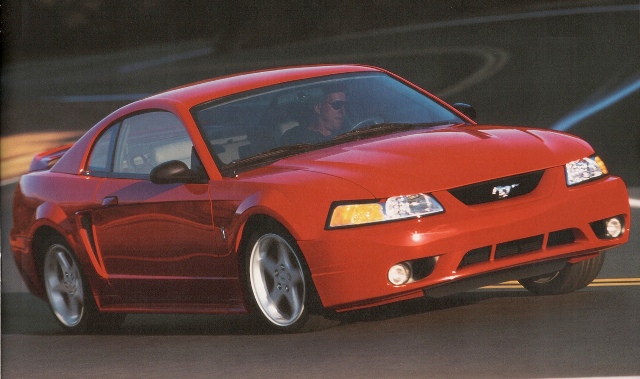
1999 Ford Mustang SVT Cobra Coupe
The 1999 SVT Cobra seemed to have everything going for it, more horsepower, a vastly improved suspension system and chiseled, aggressive good looks. On paper it was a real winner and both journalists and the public couldn’t wait to get their hands on it. On the road the ’99 Cobra went through corners with more control and greater stability than the previous model, giving the driver more confidence. The car also rode slightly better because the new rear suspension didn’t hop and skip over rougher roads as the old system had. Most journalists’ found that that when tested the 1999 Cobra didn’t have appreciably better performance numbers on a handling course. But the numbers didn’t tell the whole story; it was the way the Cobra with IRS handled that made all the difference.
In the real world on the open road or track the Cobra handing was worlds apart from the previous live axle cars. With the IRS the driver could brake later into a corner with less nose dive, this gave the car a more favorable balance of weight transfer into the corner and therefore could achieve higher entrance speeds. Exiting a corner the Cobra was able to put more power to the pavement much sooner and rocket its way out of the corner and down the road at higher velocities and it felt as if the car had even more potential with further tuning! But not everything was perfect, somehow the Cobra just didn’t feel like it had as much thrust coming out of those corners as there should have been.
While the handling was sublime acceleration and power output seemed to be a little off. Many blamed this on a vehicle that had something a miss or the fact that many of these vehicles made available to the press were preproduction models and may not have the finalized tuning. When tested the 1999 Cobra was actually slower than the car from the year before. Concerned, Ford looked into the matter and found that the production cars were not producing the advertised 320-horsepower.
After investigating, engineers found a manufacturing flaw with some of the new parts. Less than smooth walls in the intake manifold along with left over flashing from the manufacturing process were causing a restriction of the air flow into the engine. In addition to this the exhaust was also found to have a restriction around the area of the new IRS. These constraints of air flow in and out of the engine were effectively choking the engine and therefore reducing power.
On August 6, 1999 sales of the Cobra was halted and Ford feverishly worked on a solution to the problem. However by this time thousands of Cobras were already in the hands of owners, Ford need to find a solution, and fast! The problem with the intake was solved and the exhaust from the catalytic converters on back was redesigned. In addition Ford also re-mapped the engine management software in order to take full advantage of the changes, after the debacle Ford wanted be sure that customers were getting every last horsepower that was promised to them. Because most of the 1999 Cobras had already been sold Ford issued a recall to fix the horsepower issue. Intake manifolds were replaced or reamed out, the rear half of the exhaust was replaced and engine management computers re-flashed with the latest software.
Most customers were pleased that SVT took the effort to repair the problem and most owners probably didn’t even realize that the Cobra was down on power to begin with but the recall did show that SVT was committed to quality and solidify SVT as a premium brand. This commitment to fixing customers cars did come at a high price because Ford cancelled the production of the 2000 Cobra. The time and effort put into the recall and the embarrassment for Ford and especially John Colletti, the father of the SN95 Mustang and head of SVT was so great that neither one wanted to take the chance of possibly repeating the horsepower humiliation once again for the 2000 model year.
Although initially down on power the 1999 SVT Cobra is still a sensational car with many innovations like traction control, ABS and independent rear suspension all standard equipment and the 1999 Cobra still remains a great performance car value today!
2000 SVT Cobra R
Although Ford may have cancelled plans for the “regular production” Cobra, SVT rolled out its third iteration of the Cobra R for 2000 series in spite of this. In 1993 SVT rolled out its first Cobra R in limited numbers. It was a little bit faster and slightly tuned up version of the standard Cobra. It was built for track use for amateur and semi-professional weekend racers. Only a handful of these first R’s were built but many ended up in the hands of collectors instead of being used and abused. Once again in 1995 another Cobra R had come flying out of the factory and this time the car was a more focused track car with a larger 300-horsepower engine, gutted interior, and fuel cell mounted out back. This time Ford required that interested buyers have a competition license in order to obtain one of the 250 R’s built for 1995. Fast forward to the year 2000 and the public was once again graced with the presence of yet another highly tuned Cobra R.
The 2000 Cobra R was without a doubt the meanest, fastest and most focused car of the Cobra R series. In fact the 2000 Cobra R was the fastest and best handling Mustang ever! With the 2000 Cobra R, SVT pooled all of their internal and aftermarket resources to produce a barely street legal racer with performance equal a Corvette Z06. This R was designed to be the high performance benchmark for the competition.
Topping the list of modifications was the wildest mod motor ever conceived up to that point. Displacing 5.4-litres the twin-cam 32-valve V-8 pumped out a monstrous 385-horsepower and 385-pound-feet of torque, in other words enough power to propel an inexperienced driver off the road to a fiery death. To achieve this power output engineers used some parts off their own shelves, some new pieces and some aftermarket components.
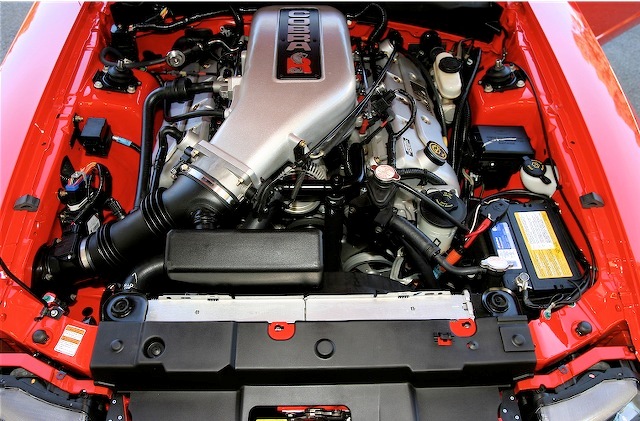
2000 SVT Cobra R 5.4-litre 385-horsepower engine
The 2000 SVT Cobra R’s engine is based on Ford’s Triton 5.4-litre cast-iron block truck engine. The cylinder bore of the 4.6-litre Cobra engine and the 5.4 are identical; however to achieve the increased displacement the 5.4 has a longer stroke of 105.8mm. Because of the longer stroke the deck height of the 5.4-litre is 29mm higher than the 4.6. Inside the block is a forged-steel crankshaft and Carrillo billet-steel connecting rods attached to flat-topped aluminum pistons allowing for a 9.6:1 compression ratio. At the bottom end of the engine is a Canton Racing Products baffled oil pan and windage tray that holds 8.5-litres of Mobil 1 synthetic motor oil.
Attached to the block is a pair of specially designed dual cam 4-valve cylinder heads. These aluminum heads were based off the heads used for Ford’s off road racing truck program. Although the Cobra R heads look similar to the 4.6 Cobra heads, the Cobra R heads have a lot more flow through the intake and exhaust ports. By redesigning the intake and exhaust valve heads and increasing exhaust valve diameter by 2mm peak airflow was increased by 25 percent versus the 4.6-litre Cobra. The camshafts in the R are similar to the Cobra’s but have higher lift and more aggressive opening and closing rates, again for better air flow.
Feeding air into the engine is a cylindrical K&N air filter feeding a large single oval bore throttle body and 80mm mass airflow sensor. Sitting atop the cylinder heads is an exquisite 2 piece aluminum intake manifold with a prominent “COBRA R” logo for all to see.
Spent exhaust gases are handled by tubular-steel exhaust manifolds bolted to a Bassani X-pipe, which feeds catalytic converters borrowed from the Cobra. From the cats back is Borla system complete with high flow mufflers and twin pipes that exit out either side just ahead of the rear wheels. When the throttle is cracked wide open the Cobra R sounds like thunder yet it has a deep, throaty melodious sound that isn’t obnoxious when driven with restraint. But with that much power who could ever drive a Cobra R with restraint?
Getting all that power to the pavement called for some serious upgrades to the driveline starting with a McLeod billet aluminum flywheel and 11-inch single plate clutch to transmit the Cobra R’s power to the transmission. With 385-horsepower on tap SVT engineers wisely decided to up grade the transmission to Tremec’s nearly indestructible T56 six-speed, this was the first time that a six-cog manual had ever been used in a Mustang. A narrow gated B&M shifter was specified for better response.
Power was put to the road through an 8.8-inch differential with upgraded 3.55:1 gear ratio, compared to the standard Cobra’s 3.27:1 ratio. The obligatory limited slip was handled by a special hydro-mechanical differential called Gerodisc, manufactured by Visteon. This unique limited-slip featured both speed and torque sensitivity in order to give the driver greater control. And the driver of the Cobra R needed all the control possible since this rocket ship was capable of attaining speeds in excess of 170mph!
Bolting the 5.4 monster into the Cobra R proved to be a bit of a challenge because of the increased deck height of the block and tall intake manifold a domed hood would have to be made much too tall to accommodate the engine. To solve this dilemma engineers cobbled up a new set of motor mounts and a new crossmember to allow the engine to sit 12mm lower in the engine bay. The Cobra R sill required the use of a fairly tall doomed hood but at least everything could now be tucked into the engine bay. A happy consequence of this change was a centre of gravity that would be lower than if the engine had sat higher, thus improving handling.
Underneath, the Cobra R was treated to a pair of monotube Bilstein shocks and Eibach springs with a super stiff 800-pounds-per-inch rate. A 28mm anti-roll bar was used to keep the car flat through the corners. At the rear the independent rear suspension that was rolled out in Cobra in 1999 was further enhanced with a 26mm anti-roll bar, twin-tube Bilstein gas shocks and Eibach springs with a spring rate of 750-pounds. Compared to the 1999 Cobra the 2000 Cobra springs were a whopping 60 percent stiffer!
A trick suspension is utterly useless without a great set of wheels and tires to provide the appropriate contact with the road and in this department the Cobra R was more than adequately equipped. The wheels are wide 18x9.5-ich five-spoke aluminum alloys wrapped in ample 265/40ZR-18 BFGoodrich g-Force KD tires made especially for the Cobra R..
Stopping power was provided by four piston aluminum Brembo calipers clamping down on 13-inch ventilated discs through Galpher racing pads. To keep things from melting down under extreme conditions is a pair of cooling ducts leading from the front fascia to a set of carbon fiber heat shields. Out back is a pair of 11.7-inch vented discs and single piston calipers loaded with Akebono racing pads. Keeping everything under control is standard issue anti-lock brakes.
Rounding out the modifications was a 21-gallon Fuel Safe fuel cell. This was keeping up the tradition of the Cobra R’s use of fuel cells that began with the ’95 Cobra.
The exterior of the Cobra R was treated to a host of modifications starting up front with a huge front splitter attached to the Cobra front bumper using Dzus fasteners. At the back a huge non-adjustable rear wing was bolted to the rear decklid. While these items may look boy-racerish they were in fact very functional and very necessary. Because the Cobra R was capable of attaining velocities of over 170mph aerodynamics became a critical issue since the New Edge Mustang was never designed to go that fast.
Mustangs are susceptible to front end lift at high speeds especially over 150mph. On the standard car this isn’t an issue however with the Cobra R designed to be used on the track this trait was clearly unacceptable. With the splitter and rear wing the Cobra R had ten times less front-end lift and three times more down force at the rear making the car safer at terminal velocity.
Aside from the aero-aids, 18-inch wheels and the domed hood that was required to clear the taller engine the only other exterior difference with the Cobra R was the rear bumper. Because the exhaust was directed out the sides of the car the rear bumper from the Cobra with its dual exhaust cutouts weren’t required, so the standard rear bumper from the V-6 Mustang was installed. Every 2000 Cobra R was finished with a coat of Performance Red paint with Dark Charcoal as the only color available for the interior.
Inside that charcoal interior, the driver and passenger was treated to a pair of heavily bolstered Recaro sport seats with the Cobra R logo embroidered into them. If you had more than one passenger with you someone would end up walking as the rear seat was deleted in order to save weight. Creature comforts such as air conditioning, radio and all sound deadening materials were all eliminated in order to lighten the car. Lastly a 180mph speedo was installed reflecting the capabilities of the Cobra R. Unlike the standard Cobra that was built for both speed and comfort the Cobra R’s only mission was to go fast, extremely fast!
The folks at SVT accomplished their goal of creating the meanest and fastest Mustang of all time, a car that could kick G.M.’s pony cars clear into next year. It really was a terrific car and went a long way to restoring faith in SVT’s capabilities after the disastrous horsepower snafu of 1999. However as good as the Cobra R was it was extremely expensive. At over $55,000 it was priced well within Corvette territory and this flabbergasted even the staunchest Mustang enthusiast.
Even at its lofty price every single one of the 300 2000 Cobra R’s produced were sold out almost overnight making it the most successful of the three cars in the Cobra R series. As amazing as the Cobra R was, many couldn’t help but think that the regular production Cobra should have similar performance characteristics as the R but at a more reasonable price point and wider availability and John Colletti, SVT’s head honcho hinted that such a car could be a possibility in the future. If SVT could produce such a car they would definitely have a screaming success on their hands!
2001 SVT Cobra
After taking a year off to regroup and recall the 1999 SVT Cobra in order to the rectify the horsepower issue; SVT was finally ready to resume production of the Cobra for 2001 and this time the snake had all of its advertised 320-horsepower on tap. With its new found kick the Cobra was finally able to match the Camaro and Firebird in a straight line drag race. But just like the other Cobras before, the 2001 iteration was more than a stop light to stop light dragster; this car was one of the best all round performance cars for the dollar.
Changes for the 2001 Cobra were minimal. The rear bumper was redesigned with “COBRA” now prominently embossed into the cover in place of “MUSTANG” as had been done on the 1999 cars. Polished five spoke alloy wheels were now optional and gave the Cobra a snazzy appearance. All Cobras now rode on 245/45ZR17 BFGoodrich Comp T/A’s.
Inside, new sports seats appeared with better bolstering to hold front seat passengers in place during spirited driving. Both front and rear seats were now upholstered in a plushier leather and suede surfaces. The front seats had the Cobra snake embroidered into them and the suede was available in either grey or beige. These changes gave the interior of the Cobra a more upscale look and feel along with greater comfort for those up front.
While the reinvigorated 2001 Cobra might have been the best of the SN95 Mustang’s to that point, sales lagged and just over 7,000 examples were sold. This however could have been because rumors were flying that SVT had something special brewing and potential Cobra buyers were holding off until an updated Cobra was launched. For those who waited, their patience was greatly rewarded!
Click here to continue reading on the next page about the 2003-2004 Ford Mustang SVT "Terminator" Cobra...
Most Popular Articles

Japanese Nostalgic Vehicles: The next trend in classic cars
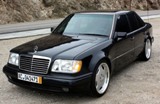
Five Sports Sedan's I'd Love to Own
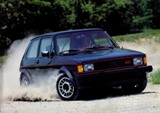
Hot Hatchbacks From the 1980's

Volvo 200 Series: An Unappriciated Classic

Triumph TR-6: Music to Anyone's Ears
Fifty Years of Mustang
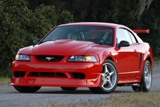
1999-2001 Ford Mustang SVT Cobra
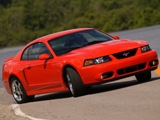
2003-2004 Ford Mustang SVT Cobra
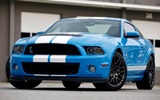
2010-2014 Ford Mustang Shelby GT500
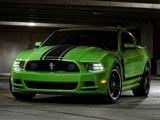
2012-2013 Ford Mustang Boss 302
Driven

Volvo 200 Series: An Unappriciated Classic

Triumph TR-6: Music to Anyone's Ears
1993 Nissan Skyline GT-s and GT-R Coupe

